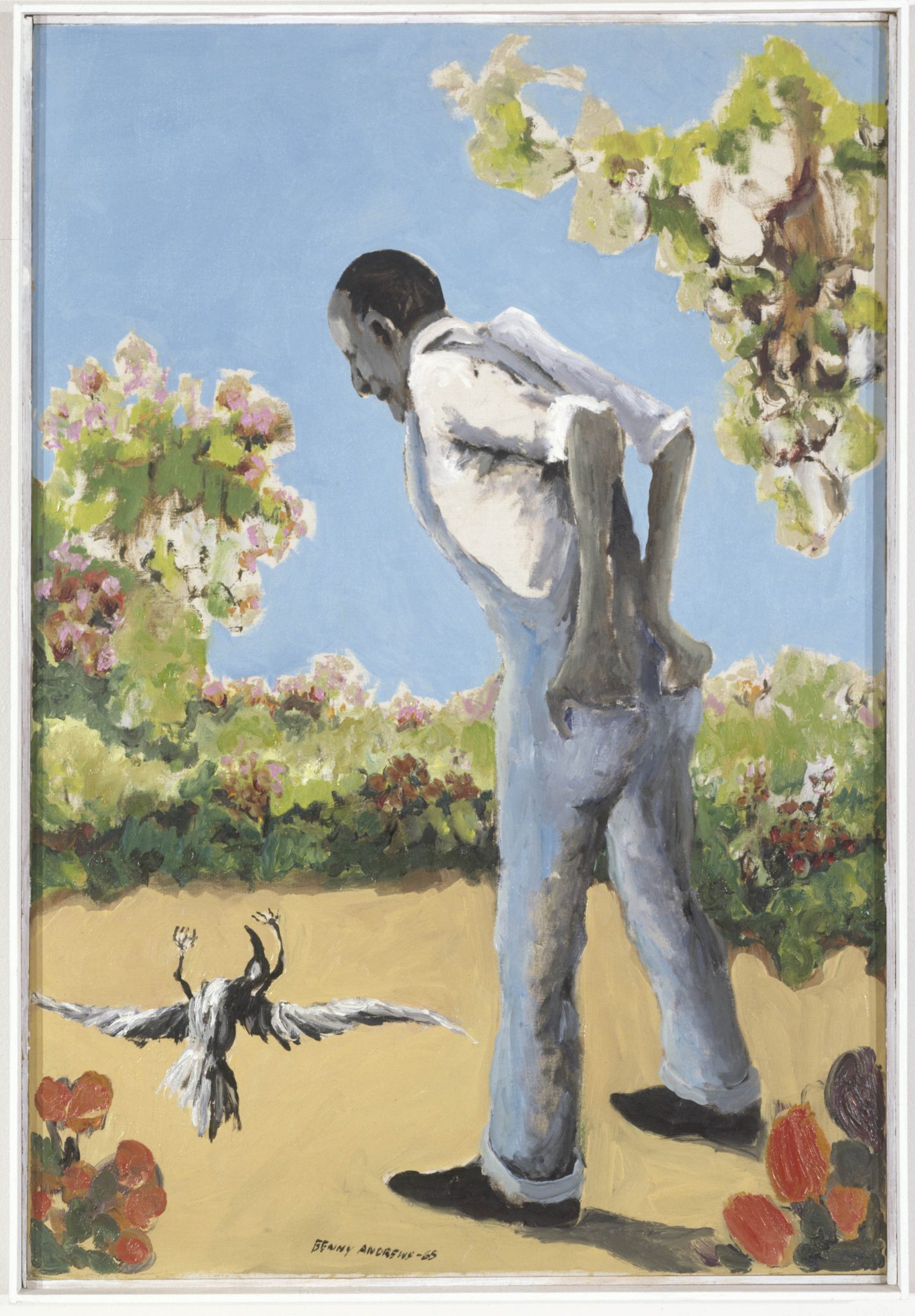
Benny Andrews, Death of the Crow, 1965, Oil and collage, Gift of the Benny Andrews Foundation
Death of the Crow?
In 1965, Benny Andrews painted Death of the Crow in response to the end of the Jim Crow Era in the American South. Andrews depicted a poor farmer cautiously approaching the symbolic crow – his stance suggesting a distrust of its actual demise. Fifty-five years later, our nation is still struggling with issues of institutionalized racism and inequality.
I have been thinking constantly of Mr. Andrews as I watch events unfold over the past few weeks. He was the Museum’s first artist member of the Board of Trustees. He was the Museum’s first Artist-in-Residence. The Museum has always had a gallery devoted to the work of the Andrews family. He informed the Museum’s mission and trajectory with his strong voice and unflinching vision. I wonder what Mr. Andrews would say, if he were still with us, about the events unfolding across our nation today.
The North Carolina artist, Juan Logan, once told me in conversation, “The role of the artist is not to provide answers, but to ask better questions.” I believe that is largely true for art museums, as well. Artists throughout the South have been asking those “better questions” of American culture for a very long time through their work, and they continue to do so. I think of artists like Pat Phillips, Trenton Doyle Hancock, Renee Stout, Willie Birch, the members of Level Artist Collective and so many more that continue this conversation. Perhaps one of the best “better questions” has already been posed by the great writer, James Baldwin, who said, “You always told me that it’s going to take time. It’s taken my father’s time, my mother’s time, my uncle’s time, my brothers’ and my sisters’ time, my nieces’ and my nephews’ time. How much time do you want for your progress?”
As I watch history repeating itself over the past few weeks, I keep returning to the paintings and drawings of Benny Andrews. In his painting, Death of the Crow, it seems that Mr. Andrews’ doubt of the symbolic crow’s demise was justified. I am saddened that the U.S. is still struggling with the same issues of inequity, injustice and inequality we faced 55 years ago. So where do we go from here?
In the foreword to “Benny Andrews: There Must be a Heaven,” Congressman John Lewis wrote, “Through all the jailings, beatings, protests and prayers of the Civil Rights Movement, we always had “this basic idea,” as Benny so appropriately put it, “that good would overcome evil.” And it was from that place that we offered our complaint. Our desire was not to condemn, but to appeal to the better angels of all humanity. We demonstrated what was wrong to awaken that divine spark that resides in all of us with the power to build and not tear down, to reconcile and not divide, to love and not hate. This critique is an invitation to build a better world based on simple justice that values the dignity and the worth of every human being.” I hope that we can continue to embrace that “basic idea” held by Congressman Lewis and Mr. Andrews, that we may find that divine spark within ourselves, and that we may accept that invitation to work toward building a better world.
Bradley Sumrall
Curator of the Collection
Ogden Museum of Southern Art
